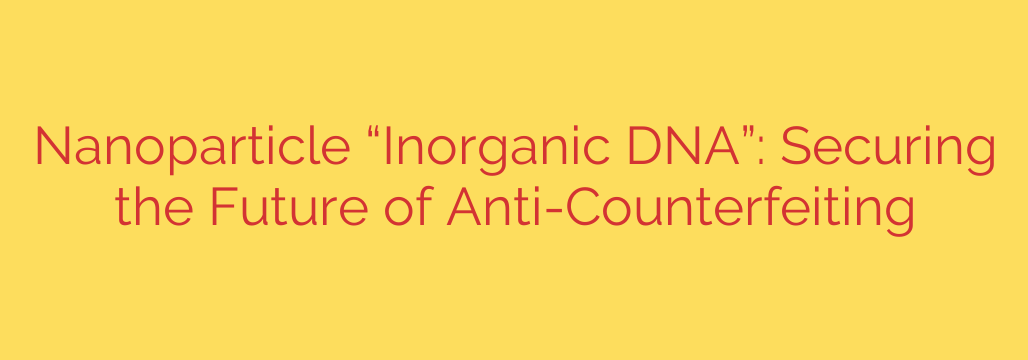
Securing Products with Invisible Ink: How Nanoparticle Technology Fights Counterfeiting
Counterfeiting is a global threat, extending far beyond just fake luxury goods. From fraudulent pharmaceuticals and electronics to counterfeit parts in critical machinery and fake documents, the trade in illicit goods poses significant economic losses, serious safety hazards to consumers, and damage to brand integrity for legitimate businesses. As counterfeiters employ increasingly sophisticated methods, traditional anti-counterfeiting techniques like holograms and special inks are often replicated. This drives the need for more advanced, virtually impossible-to-forge security solutions.
The frontier of product security is now moving into the realm of nanotechnology. One promising approach involves utilizing nanoparticles to create unique, embedded identifiers that act much like biological DNA – but for inanimate objects. This concept, sometimes referred to as “inorganic DNA,” leverages the unique properties of nanoscale materials to build an undetectable or near-invisible security layer.
How does this work? Instead of a simple visual mark, this technology involves embedding a complex, pre-determined arrangement or pattern of specific nanoparticles within a product’s label, packaging, or even the product itself. This arrangement isn’t just random; it’s a coded sequence or structure at the microscopic level. Because these patterns are created using precise formulations and application methods, they are virtually impossible for counterfeiters to analyze and replicate without knowing the exact specifications and having access to sophisticated nanoparticle manufacturing capabilities.
The beauty of this “inorganic DNA” lies in its complexity and covert nature. The patterns can be covertly applied, meaning a counterfeiter might not even know a security feature is present, let alone how to copy it. To verify the authenticity of a product, a specialized scanner or reader is used. This device interacts with the nanoparticle pattern, reading its unique “signature” to confirm if it matches the genuine code. This provides a fast, reliable, and definitive method of authentication.
This advanced anti-counterfeiting measure offers several key advantages:
- Extreme Difficulty to Counterfeit: The intricate nanoscale patterns are orders of magnitude more complex than visible security features.
- High Durability: Once embedded, the nanoparticle signature is highly resistant to environmental factors, wear, and tampering.
- Versatility: The technology can be adapted for application on a wide range of materials and products.
- Reliable Verification: Specialized readers provide a clear, objective authentication result, reducing guesswork.
Such sophisticated technology is invaluable for industries where authenticity is critical, including pharmaceuticals, high-value luxury goods, electronics, automotive parts, and official documents.
For consumers, while you might not directly see the “inorganic DNA,” its implementation by brands provides an invisible layer of trust. It means companies are investing in cutting-edge methods to ensure the products you buy are genuine and safe. For businesses, investing in robust anti-counterfeiting measures like nanoparticle-based security is crucial for protecting revenue, maintaining consumer trust, and safeguarding brand reputation in an increasingly complex global market.
Ultimately, advanced technologies like nanoparticle “inorganic DNA” are building a more secure future, creating an invisible shield against the pervasive threat of counterfeit goods and helping to ensure product authenticity from origin to consumer. As a consumer, always remember to purchase from reputable sources to minimize the risk of encountering fakes.
Source: https://www.helpnetsecurity.com/2025/07/15/inorganic-dna-nanoparticles-anti-counterfeiting-tech/








